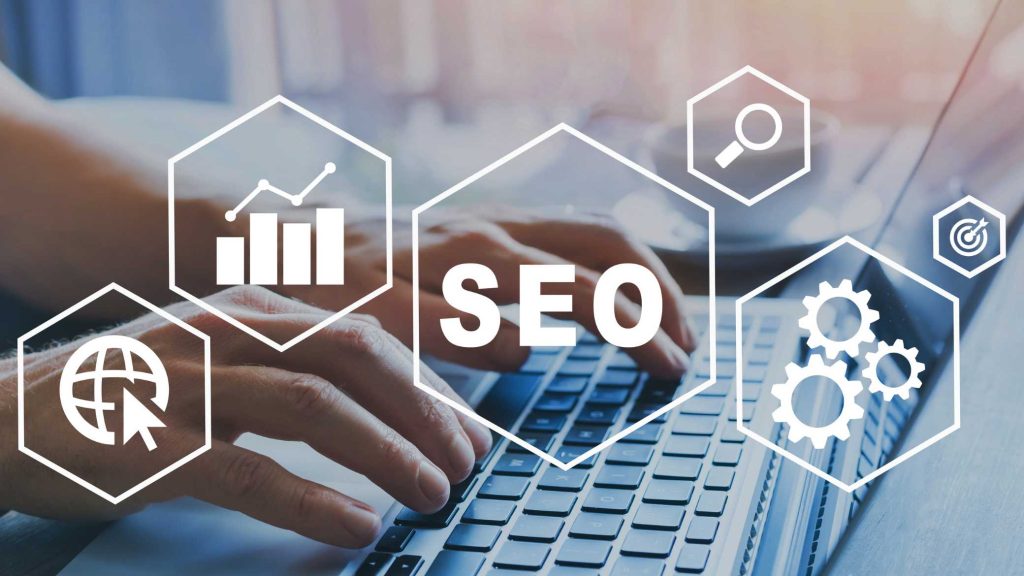The Power of SEO: How It Can Transform Your Business : Comprehensive Guide 2024
Power of SEO : Search Engine Optimization (SEO) is often described as the art and science of improving a website’s visibility on search engines like Google, Bing, and Yahoo. It’s a key digital marketing strategy that, when executed correctly, can significantly transform a business by driving organic traffic, increasing brand awareness, improving user experience, and generating leads and sales. In the digital age, where consumers rely heavily on online searches to find products, services, and solutions, SEO is more powerful than ever before.
Table of Contents
This essay explores the multifaceted power of SEO and how it can radically transform your business, from improving your search engine rankings to building a sustainable online presence and attracting valuable customers. We will cover key aspects of SEO such as its role in marketing, the technical components that drive it, and real-world examples of how businesses have leveraged SEO for success.
1. Understanding the Basics of SEO

SEO involves optimizing various elements of a website, including its content, design, and technical structure, so that it ranks higher on search engine results pages (SERPs). The goal of SEO is to increase organic traffic to your website, meaning visitors who arrive from search engines rather than paid advertisements.
There are two main types of SEO: on-page and off-page SEO.
- On-Page SEO: This refers to all the actions taken within your website to improve its search engine rankings. This includes optimizing content with relevant keywords, ensuring the website structure is user-friendly, improving page load speeds, and making sure the site is mobile-responsive.
- Off-Page SEO: This involves external factors that influence search rankings, primarily backlinks from other reputable websites. Search engines view backlinks as “votes of confidence” for your content, which can enhance your site’s authority and visibility.
2. How SEO Drives Organic Traffic
One of the most significant benefits of SEO is its ability to drive organic traffic to your website. Organic traffic refers to visitors who find your website through unpaid search results. When your website appears on the first page of search results for relevant keywords, it is far more likely to attract visitors. This type of traffic is valuable because it brings in users who are actively searching for products or services related to what you offer.
Also Read : 10 Best AI SEO Tools for Optimizing Your Website in 2024
The statistics are clear: 75% of users never scroll past the first page of search results, meaning businesses that rank on the second page or beyond are less likely to be seen. SEO helps ensure that your business doesn’t get lost in the crowd, but rather stands out in front of potential customers at the exact moment they are searching for what you have to offer.
3. Building Trust and Credibility
Trust is a critical factor in any business’s relationship with customers. SEO is a powerful tool for building that trust and credibility. When your website ranks high on search engines, users tend to view your business as more reputable and trustworthy. Higher rankings signal to consumers that your business is an authoritative source in your industry.
Moreover, elements like a clean website design, fast loading times, mobile optimization, and secure browsing (HTTPS) all contribute to a positive user experience, which is increasingly important to search engines. Google, for example, rewards sites that prioritize user experience. Therefore, by investing in SEO, you are also investing in a website that fosters trust with your audience.
4. Targeting the Right Audience
SEO allows businesses to target the exact audience that is most likely to convert. Through careful keyword research, you can identify the search terms potential customers are using to find products or services like yours. Once these keywords are identified, you can optimize your website to align with those terms, ensuring that your content answers the specific queries people are searching for.
Unlike traditional advertising, where you might cast a wide net in the hopes of attracting potential customers, SEO allows you to zero in on people who are actively searching for solutions. This precision targeting increases the likelihood of converting those visitors into leads or sales.
5. SEO and Local Search
For businesses that rely on local customers, local SEO is a game-changer. Local SEO is the practice of optimizing your website and online presence to attract customers in your geographical area. This is particularly important for brick-and-mortar businesses like restaurants, law firms, and retail stores.
Optimizing for local search involves creating a Google My Business profile, building local citations (mentions of your business on local directories), and acquiring local backlinks. Additionally, ensuring that your website contains location-specific keywords and provides relevant information such as your address, phone number, and hours of operation can improve your rankings for local searches.
The growing importance of local search cannot be overstated. According to a Google study, 46% of all searches have local intent, meaning nearly half of all searches are related to something nearby. By leveraging local SEO, businesses can drive more foot traffic, increase phone calls, and ultimately generate more sales in their community.
6. Improving User Experience
User experience (UX) is a crucial factor in SEO success. Search engines like Google have begun to prioritize user experience as a ranking factor, meaning they reward websites that are fast, easy to navigate, and visually appealing. A positive user experience not only benefits your SEO but also keeps visitors engaged with your content and encourages them to return.
Some of the key UX elements that impact SEO include:
- Page Speed: Slow-loading pages are a major turn-off for users and can lead to higher bounce rates. Google uses page speed as a ranking factor, so optimizing load times can improve both user experience and SEO.
- Mobile Optimization: With the increasing use of mobile devices, having a mobile-friendly website is essential for SEO. Google now uses mobile-first indexing, meaning it evaluates the mobile version of your website before the desktop version.
- Navigation and Structure: Clear navigation and a logical website structure help users find what they’re looking for quickly and easily. This reduces bounce rates and encourages visitors to spend more time on your site, which positively impacts your rankings.
7. Cost-Effectiveness Compared to Paid Advertising

SEO offers a cost-effective alternative to paid advertising methods like Google Ads. While paid advertising can provide immediate results, it requires a continuous budget allocation to maintain visibility. SEO, on the other hand, provides long-term benefits by increasing organic traffic without ongoing costs.
It’s important to note that SEO requires an investment of time and effort, especially in the early stages. However, the payoff is significant, as the traffic generated through SEO is free and sustainable. Over time, SEO helps build a solid foundation for your online presence, while paid ads may stop yielding results once the budget runs out.
8. The Role of Content in SEO
Content is at the heart of SEO. High-quality, relevant content can significantly improve your search engine rankings and drive traffic to your website. Creating content that answers the questions and needs of your target audience helps you build authority in your field and establishes trust with users.
To maximize the effectiveness of your content, consider the following:
- Keyword Optimization: Use relevant keywords naturally within your content to ensure that it matches the search queries of potential customers.
- Engaging and Valuable Content: Create content that provides value to users, whether through blog posts, how-to guides, product reviews, or case studies. Engaged users are more likely to stay on your site longer, increasing the likelihood of conversion.
- Regular Updates: Consistently updating your content signals to search engines that your website is active and relevant. This can help improve rankings and keep your audience engaged.
9. Real-World Examples of SEO Success
Many businesses have leveraged SEO to achieve impressive results. Let’s explore a few examples:
- Airbnb: Airbnb’s rise to prominence can be attributed in part to its savvy SEO strategy. By optimizing its website for local search terms, targeting relevant keywords, and generating a steady flow of user-generated content, Airbnb significantly boosted its visibility and became a leader in the vacation rental industry.
- Moz: Moz, a popular SEO software company, effectively used its own products to improve its search engine rankings. By consistently producing high-quality blog content, engaging in link-building activities, and optimizing its website for SEO, Moz transformed from a small startup into an authority in the SEO industry.
- Small Local Businesses: Many small businesses have found success through local SEO efforts. For example, a local restaurant that optimizes its Google My Business profile and receives positive reviews can appear at the top of local search results, driving more foot traffic and generating more customers.
10. Measuring SEO Success
To fully understand the power of SEO, businesses must track and measure their SEO efforts. There are several key performance indicators (KPIs) that can help assess the effectiveness of an SEO campaign:
- Organic Traffic: The number of visitors coming to your website from search engines is a primary indicator of SEO success.
- Keyword Rankings: Monitoring the ranking positions of targeted keywords helps gauge how well your website is performing in search results.
- Bounce Rate: A high bounce rate may indicate poor user experience or irrelevant content, while a low bounce rate suggests that visitors find your website valuable and engaging.
- Conversion Rate: Ultimately, SEO is about turning visitors into customers. Monitoring how many visitors complete desired actions, such as making a purchase or signing up for a newsletter, is a key indicator of SEO success.
11. The Future of SEO
As search engines continue to evolve, so too does SEO. Emerging trends such as voice search, artificial intelligence, and machine learning are shaping the future of SEO. Businesses that stay ahead of these trends and adapt their SEO strategies accordingly will have a competitive advantage.
In the future, SEO will likely place even greater emphasis on user intent and delivering personalized experiences. With the rise of voice-activated assistants like Google Assistant and Alexa, optimizing for conversational search queries will become increasingly important.
Power of SEO – Conclusion :

The power of SEO cannot be overstated. By improving your website’s visibility on search engines, building trust and credibility, targeting the right audience, and enhancing user experience, SEO can be the driving force behind your business’s growth and success.
Buy Now : SEO Mastery Detailed Course
Whether you are a small local business or a large global enterprise, SEO is a crucial tool that can help you stay competitive in today’s digital world. By investing time and resources into a solid SEO strategy, businesses can experience long-term, sustainable growth and transform their online presence.
Keywords : Power of SEO – Power of SEO 2024 – Power of SEO 2025



